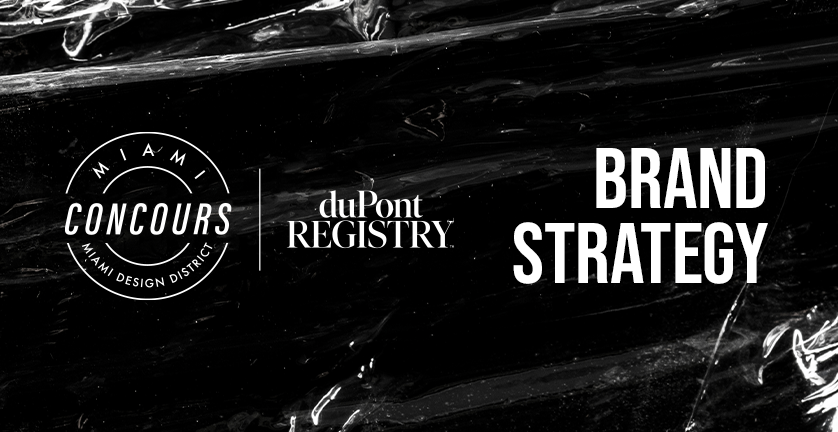
Setting brand goals is a crucial step in building a strong and impactful brand. Whether you’re a startup or an established company, having well-defined brand goals helps align your team’s efforts, measure progress, and drive success. In this blog post, we will discuss the importance of brand goals, provide practical tips for setting them, and offer guidance on ensuring they are meaningful, achievable, and aligned with your overall business objectives and what will happen if you so choose to work with a branding agency like duPont Registry Digital.
1. Understand Your Business and Market
Before setting brand goals, it’s essential to have a clear understanding of your business and market. Conduct thorough research on your target audience, competitors, industry trends, and unique value proposition. This information will enable you to set realistic and relevant goals for your brand. At duPont Registry Digital, we identify your brand identity through our brand development services. Goal setting is our priority.
2. Define Your Brand Identity
Your brand goals should be aligned with your brand identity. Start by defining your brand’s mission, vision, values, and personality. These elements will guide your goal-setting process and help you create goals that are in line with your brand’s essence.
3. Set SMART Goals
Use the SMART framework to establish goals that are Specific, Measurable, Achievable, Relevant, and Time-bound. Specific goals provide clarity, measurable goals allow you to track progress, achievable goals ensure they are within reach, relevant goals are aligned with your brand’s vision, and time-bound goals create a sense of urgency.

What are Brand Goal Examples?
Brand goals are the overarching objectives that guide a company’s branding efforts and shape its identity in the market. These goals are essential for establishing a strong brand presence and ensuring long-term success. Here are some examples of brand goals that companies often strive for:
1. Increase brand awareness: One of the primary goals for many brands is to enhance their visibility and recognition among the target audience. This involves creating a strong brand identity, utilizing effective marketing strategies, and engaging in consistent brand messaging.
2. Build brand loyalty: Developing a loyal customer base is crucial for sustainable growth. Brands aim to foster positive relationships with customers, providing exceptional experiences, superior products or services, and consistent value, to create a sense of loyalty and repeat business.
3. Differentiate from competitors: In today’s competitive market, standing out from the crowd is vital. Brands strive to differentiate themselves by highlighting unique selling points, such as quality, innovation, or customer service, to position themselves as the preferred choice among consumers.
4. Enhance brand reputation: Building a positive brand reputation is crucial for gaining trust and credibility. Brands focus on maintaining high standards, delivering on promises, and actively managing their online presence to establish a favorable perception among customers and stakeholders.
5. Drive brand consistency: Consistency across all brand development touchpoints is essential to build a strong and recognizable brand. Brands aim to maintain consistency in their messaging, visual identity, and customer experience to create a cohesive and memorable brand image.
6. Foster brand advocacy: Beyond loyal customers, brands aspire to cultivate brand advocates who actively promote their products or services. By delivering exceptional experiences and encouraging customer satisfaction, brands aim to turn customers into enthusiastic brand ambassadors, expanding their reach and influence.
These are just a few examples of brand goals that companies pursue. The specific goals may vary depending on the industry, target audience, and company objectives, but the underlying principles of creating a strong brand presence and achieving sustainable growth remain constant.

4. Prioritize and Focus
While it’s tempting to set numerous goals, it’s crucial to prioritize and focus on the most critical ones. Identify the key areas where your brand needs improvement or growth, and set goals accordingly. By focusing on a few core objectives, you can direct your resources and efforts effectively through things like website design and content services.
5. Create Actionable Steps
Break down each goal into actionable steps or milestones. These smaller tasks will make the goals more manageable and allow you to measure progress along the way. Assign responsibilities, set deadlines, and establish clear metrics to track the success of each step.
6. Monitor and Evaluate
Regularly monitor and evaluate your progress toward your brand goals. Implement metrics and key performance indicators (KPIs) to measure your success. Review and adjust your goals as needed, considering any changes in the market, industry, or business landscape.
What are KPIs?
KPIs, or Key Performance Indicators, are measurable values that organizations use to evaluate their success in achieving specific objectives. They serve as quantifiable benchmarks that reflect the performance and progress of an individual, team, department, or organization. KPIs are essential in strategic planning and decision-making processes as they provide meaningful insights into critical areas of performance. These indicators can vary depending on the nature of the goals and can include metrics like revenue growth, customer satisfaction, employee productivity, market share, and more. By monitoring and analyzing KPIs, businesses can identify areas of improvement, set realistic targets, and align their actions to drive desired outcomes.
7. Communicate and Engage
Ensure that your brand goals are communicated effectively throughout your organization. Engage your team members, employees, and stakeholders in the goal-setting process. Encourage their input, provide updates on progress, and celebrate achievements together. Building a shared understanding and commitment to your brand goals will foster a collaborative and motivated environment.

Conclusion
Setting brand goals is a strategic process that requires a deep understanding of your business, market, and brand identity. By setting SMART goals, prioritizing, creating actionable steps, and monitoring progress, you can effectively align your team’s efforts and drive your brand identity toward success. Remember to communicate your goals across the organization and involve your stakeholders in the process. With well-defined brand goals in place, you’ll be equipped to navigate challenges, measure achievements, and build a strong and impactful brand presence in the marketplace.
How duPont Registry Digital Helps
Your digital strategy should fit the unique requirements of your business and target audience. There is no one-size-fits-all approach, so it’s important to discover what works best for your company and monitor the impact of each action on your overall success.
As a branding agency, we create and reestablish your brand identity via website design and app design, brand development, and content services. Schedule a call to see how we can help you with our unique integrated marketing strategy.


















